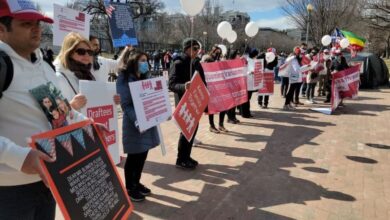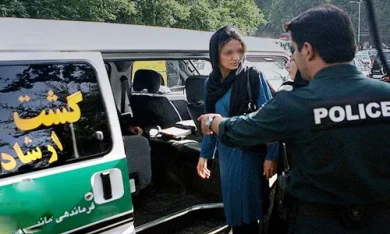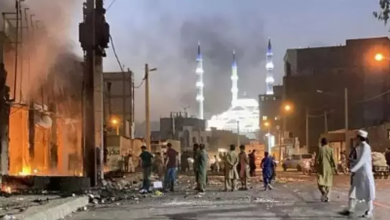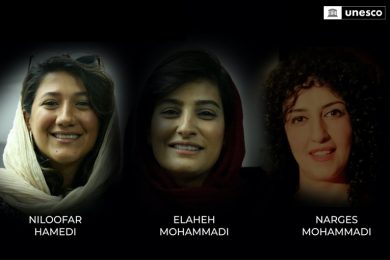Across Iran’s turbulent social and political landscape, a powerful force is rising — one defined by resilience, defiance, and vision. Iranian women, long marginalized and silenced, are not only resisting the authoritarian regime but actively shaping a new vision for Iran’s future. Their battle for freedom and equality, often waged at great personal cost, is redefining the country’s trajectory. The slogan “Women, Life, Freedom” is no longer just a chant; it is a roadmap.
This analysis explores the role of Iranian women in shaping tomorrow’s Iran — from grassroots activism and digital resistance to leadership in protests, cultural revolution, and international advocacy. It also examines the societal and political structures that seek to suppress them, especially the role of the Islamic Revolutionary Guard Corps (IRGC), and how Iranian women are pushing back with courage, creativity, and clarity.
1. Historical Context: Women at the Heart of Iranian Social Change
Pre-1979 and Post-Revolution Shift
Iranian women have historically played a central role in shaping the country’s cultural and political fabric. Prior to the 1979 Islamic Revolution, women were gaining ground in education, employment, and legal rights. However, the revolution ushered in a theocratic regime that drastically curtailed women’s freedoms. Mandatory hijab laws, gender segregation, limited legal rights, and strict morality codes became part of daily life.
Yet, from the very beginning of this repression, women resisted — quietly and openly. Whether by wearing their hijab loosely, organizing underground feminist networks, or writing politically charged literature, they kept the spirit of resistance alive.
2. The Role of the IRGC in Gender Oppression
The IRGC functions as the regime’s most powerful arm for maintaining ideological control. It is heavily involved in:
• Policing women’s behavior, especially in public.
• Controlling media and censoring feminist narratives.
• Arresting and imprisoning female activists and journalists.
• Suppressing women-led protests through violence and intimidation.
• Enforcing digital surveillance, tracking online dissent led by women.
The IRGC sees outspoken women as threats because their leadership challenges both religious orthodoxy and authoritarian governance.
3. The “Women, Life, Freedom” Movement
The slogan “Zan, Zendegi, Azadi” (Women, Life, Freedom) became a rallying cry following the death of Mahsa Amini in September 2022, a young woman killed in custody for allegedly wearing her hijab “improperly.”
What began as protests over compulsory hijab quickly turned into a broader movement calling for:
• Regime change.
• Gender equality.
• Human rights and freedom of speech.
• End to religious and patriarchal rule.
Women, particularly Generation Z, have taken the lead in organizing, documenting, and spreading the movement both within Iran and globally.
4. Digital Resistance and Social Media Power
Reclaiming the Narrative
With mainstream media tightly controlled by the state, Iranian women have turned to social media platforms like Instagram, Twitter, and Telegram to:
• Share protest footage.
• Publish stories of abuse.
• Organize flash mobs and civil disobedience.
• Amplify global attention.
Women like Masih Alinejad have created international campaigns such as #MyStealthyFreedom to showcase defiance and build global solidarity.
The IRGC’s Cyber Response
In response, the IRGC has:
• Shut down internet access during protests.
• Deployed cyber units to track users.
• Hacked activist accounts.
• Spread propaganda and misinformation.
Still, Iranian women continue to find innovative ways to bypass censorship.
5. From Protesters to Visionary Leaders
Iranian women are not just resisting; they are reimagining Iran’s future — politically, socially, and culturally.
Educational Leadership
Women now make up the majority of university graduates in Iran. Despite high unemployment, they are:
• Creating startups.
• Publishing research.
• Teaching underground feminist theory.
• Developing online educational platforms.
Cultural Leadership
Artists, filmmakers, musicians, and writers — many of them women — are challenging traditional narratives and pushing for change through cultural expression, despite censorship.
Examples include:
• Documentaries by women about protest movements.
• Music videos and poetry as protest tools.
• Art installations that honor victims of state violence.
6. Voices from Inside the Prison Walls
Women like Narges Mohammadi and Nasrin Sotoudeh have spent years in prison for their activism, yet continue to lead from behind bars. Letters and statements smuggled out of prison become tools of resistance, reminding the world that:
“The body can be caged, but the mind remains free.”
Their defiance inspires others and shatters the regime’s attempt to silence dissent.
7. Intergenerational and Intersectional Strength
Iranian women’s activism is:
• Intergenerational: Daughters join their mothers in protesting decades of oppression.
• Intersectional: Women from Kurdish, Baloch, Arab, and religious minority communities demand both gender equality and ethnic justice.
This diversity makes the movement inclusive, powerful, and reflective of Iran’s multi-layered identity.
8. International Support and Global Feminism
Iranian women have garnered international support, especially from:
• Feminist movements worldwide.
• Human rights organizations like Amnesty and Human Rights Watch.
• United Nations bodies.
• The Iranian diaspora, which plays a crucial role in lobbying foreign governments and raising awareness.
The 2023 Nobel Peace Prize awarded to Narges Mohammadi further cemented the global recognition of Iranian women’s leadership.
9. Obstacles Ahead: Repression, Risk, and Fatigue
While the momentum is strong, challenges remain:
• Violent crackdowns by the IRGC.
• Mass arrests of protesters and their families.
• Media blackouts and internet shutdowns.
• International inaction or inconsistency in pressuring the regime.
Despite this, the spirit of Iranian women has not wavered.
10. The Road Ahead: Shaping a Free Iran
A free Iran will not be possible without women’s leadership at every level:
• Constitutional reform must include women’s rights and gender equality.
• New institutions must include female representation.
• Cultural shifts must challenge patriarchal norms and honor diversity.
Iranian women are not asking for permission to lead — they are already doing so. The world must recognize, support, and amplify them.
Conclusion
The future of Iran is not being shaped by the regime — it is being built by Iranian women. Through courage, resistance, and vision, they are creating a new Iran that values life over control, freedom over fear, and equality over oppression.
The world must not only watch, but stand with them. Because when Iranian women win, it won’t just be a victory for Iran — it will be a victory for humanity.
Join Our Newsletter!
Stay informed with the latest updates, news, and ways to take action in the fight for justice and global security. Sign up now to get updates delivered straight to your inbox!





